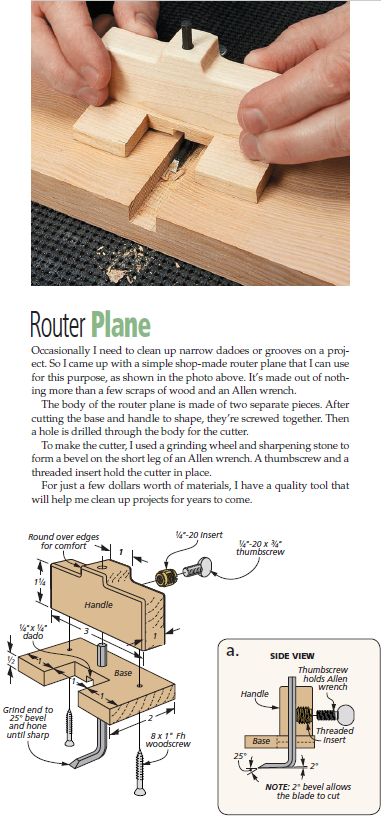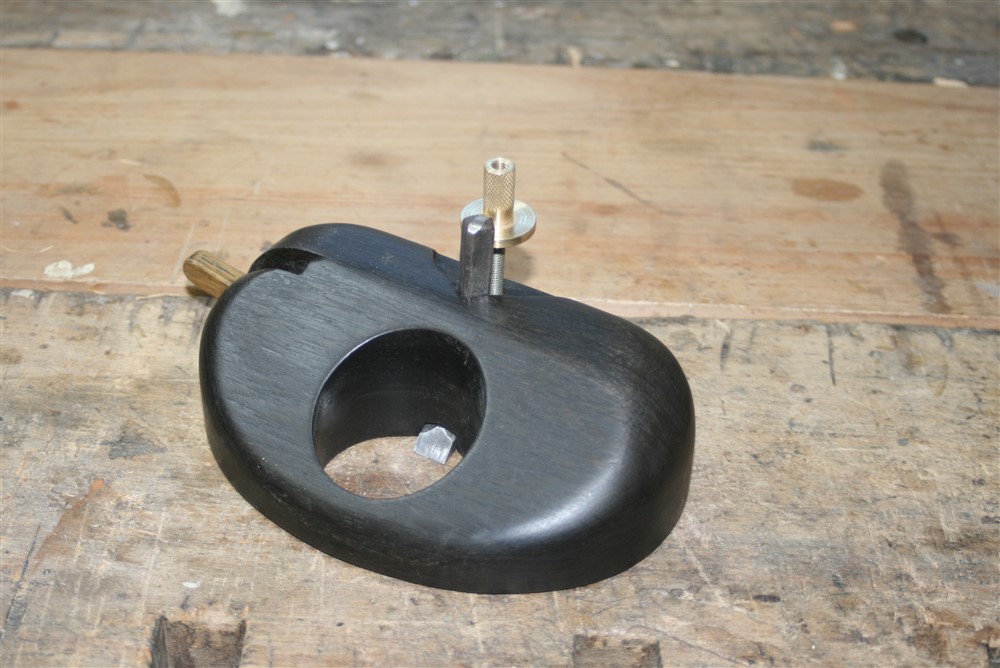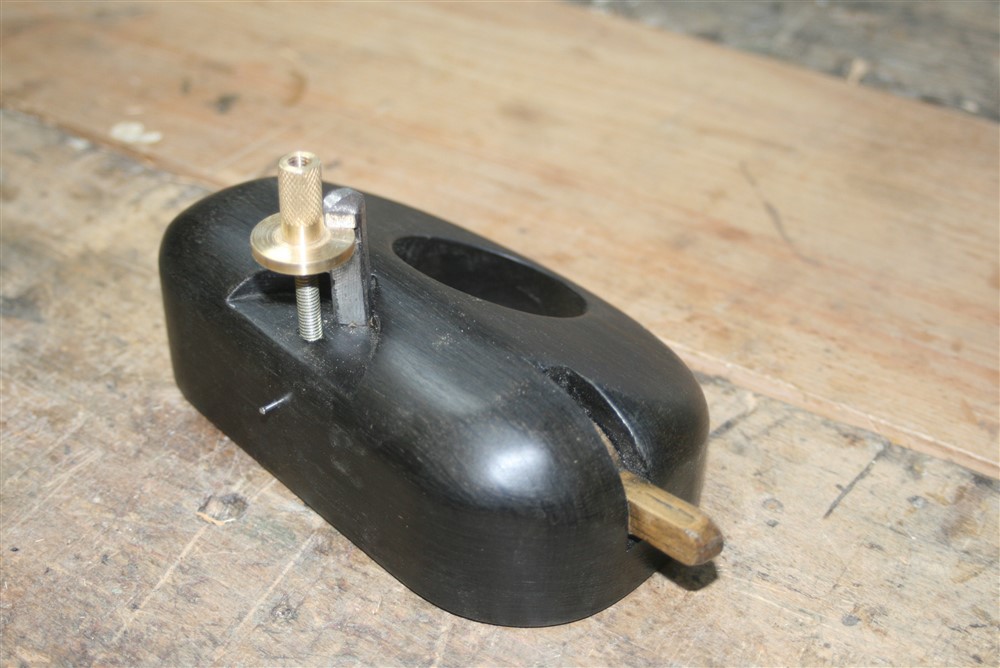bp122
Expert at Jibber-Jabber
Hi all
Just wondering , I want to make a Router plane. Nothing high tech or full of features, just something to reliably set the depth and cut in reference to the surface the sole of the plane is riding on.
I came across a really simple way of building the block while browsing pinterest. The concept is using a thick flat slab and a block, both squared and the block rests on the slab with a hole in it for the blade / iron and a thumb screw to fasten the blade t lock its depth. Anyway, the block isn't my issue, the blade / iron is.
The bloke who did it used a thick bent hex key and ground a flat on the bottom and the bevel on top.
My question to all of you who are good at identifying tool steels are:
1. Whether a hardened chrome-vanadium Hex key (17mm hex on ebay for a tenner) a good steel for a router iron (blade)?
2. Is it too soft (and dulls easy) or too hard (difficult to sharpen) - or just downright pig to work with?
3. Considering this blade will have to skim both along and across the grain, what should I watch out for?
4. Are there any alternatives?
The work pieces I intend to work on are Oak, Sapele and Beech mainly.
Has anyone done anything like this?
I have indeed looked for router plane irons being sold as spares on fleabay, but either they are very expensive or they don't look like they have a lot of meat left to grind a decent edge on them.
Just wondering , I want to make a Router plane. Nothing high tech or full of features, just something to reliably set the depth and cut in reference to the surface the sole of the plane is riding on.
I came across a really simple way of building the block while browsing pinterest. The concept is using a thick flat slab and a block, both squared and the block rests on the slab with a hole in it for the blade / iron and a thumb screw to fasten the blade t lock its depth. Anyway, the block isn't my issue, the blade / iron is.
The bloke who did it used a thick bent hex key and ground a flat on the bottom and the bevel on top.
My question to all of you who are good at identifying tool steels are:
1. Whether a hardened chrome-vanadium Hex key (17mm hex on ebay for a tenner) a good steel for a router iron (blade)?
2. Is it too soft (and dulls easy) or too hard (difficult to sharpen) - or just downright pig to work with?
3. Considering this blade will have to skim both along and across the grain, what should I watch out for?
4. Are there any alternatives?
The work pieces I intend to work on are Oak, Sapele and Beech mainly.
Has anyone done anything like this?
I have indeed looked for router plane irons being sold as spares on fleabay, but either they are very expensive or they don't look like they have a lot of meat left to grind a decent edge on them.






































